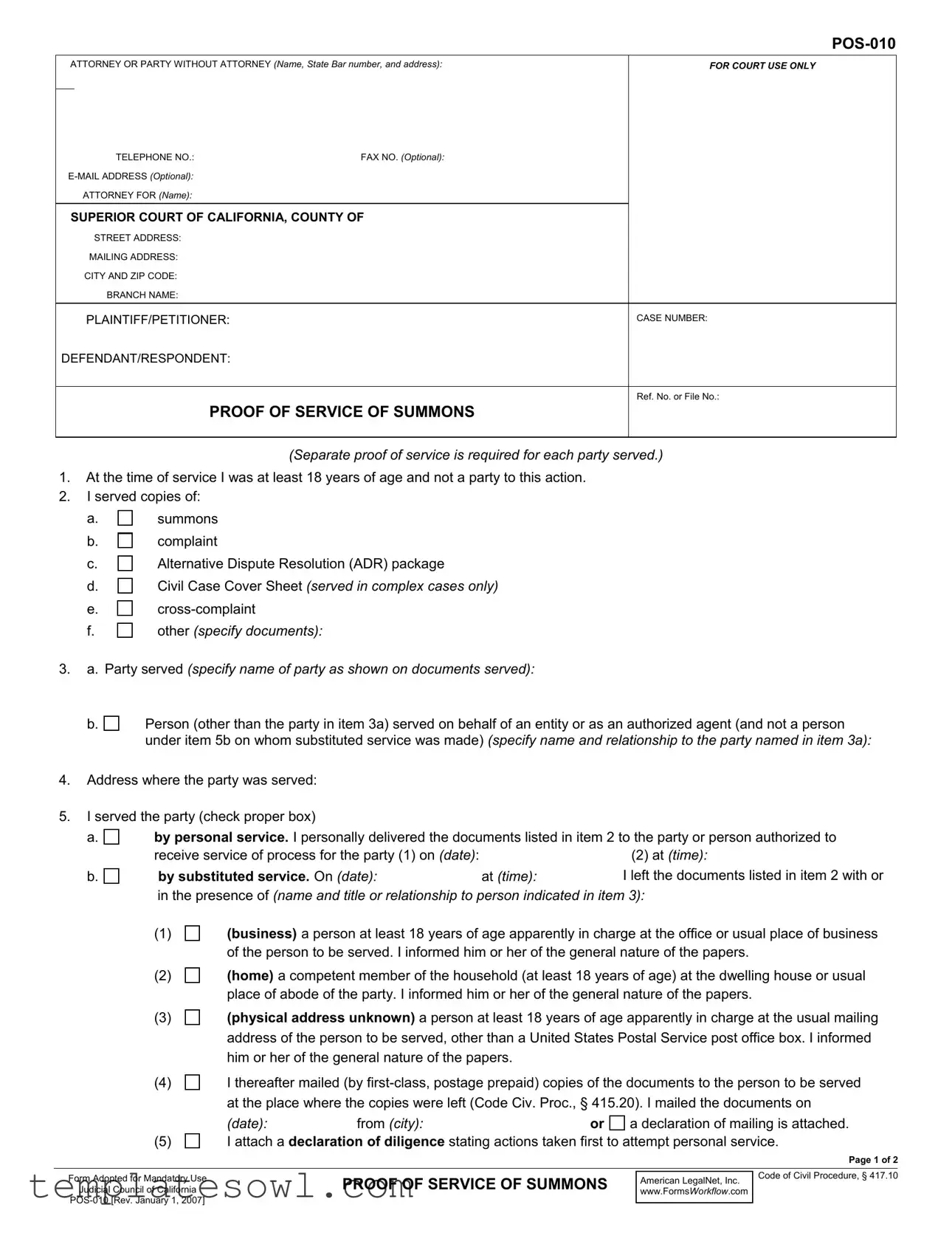What is the purpose of the California POS 010 form?
The California POS 010 form, also known as the Proof of Service of Summons, serves as a formal declaration that a party has been properly served with legal documents related to a case. This form is essential in ensuring that all involved parties are aware of the legal proceedings, thereby upholding their right to due process.
Who can serve documents covered by the POS 010 form?
Documents can be served by anyone who is at least 18 years old and not involved in the case. This opens up options for friends, family, or professional process servers to deliver documents to the parties involved.
What documents are typically served with the POS 010?
Common documents that accompany the POS 010 include the summons, the complaint, an Alternative Dispute Resolution (ADR) package, and potentially a Civil Case Cover Sheet in complex cases. The specific documents will depend on the nature of the case.
What are the different methods of service outlined in the form?
The form allows for several methods of service: personal service, substituted service, mail with acknowledgment of receipt, and other specified means. Each method has different requirements and is used based on the circumstances surrounding the party being served.
What information must be included on the POS 010 form?
Completing the form requires detailed information including the names and addresses of the parties, the date and time of service, and how the documents were delivered. It also necessitates a statement confirming that the person serving the documents is at least 18 years old and not a party to the action.
Is it necessary to serve every party involved in a case?
Yes, separate proof of service is required for each party being served. This ensures that each party receives the necessary documents and has an opportunity to respond, thereby maintaining the integrity of the legal process.
What should I do if I am unable to serve a party personally?
If personal service is not possible, you may utilize substituted service by leaving the documents with a responsible person at the individual’s home or business. Additionally, you can follow up by mailing the documents to the party's address, provided this is allowed by the rules for service.
What happens if a party does not acknowledge receipt of the documents?
If a party does not acknowledge receipt of the documents, it does not invalidate the service as long as the service was conducted according to the requirements set forth in the POS 010. However, it may complicate the case, as the parties may still dispute whether they received proper notice of the proceedings.
Can I complete the POS 010 form on my own, or do I need legal assistance?
You can complete the POS 010 form without legal assistance, provided you understand the requirements for serving legal documents. However, legal professionals can offer guidance, ensuring accuracy and compliance with the law, especially in complex cases.
How do I submit the completed POS 010 form?
The completed POS 010 form should be filed with the court as part of your case documentation. It is essential to keep a copy for your records and to serve a copy on all parties involved to confirm their receipt of the documents.



 summons
summons
 complaint
complaint
 a declaration of mailing is attached. I attach a
a declaration of mailing is attached. I attach a 